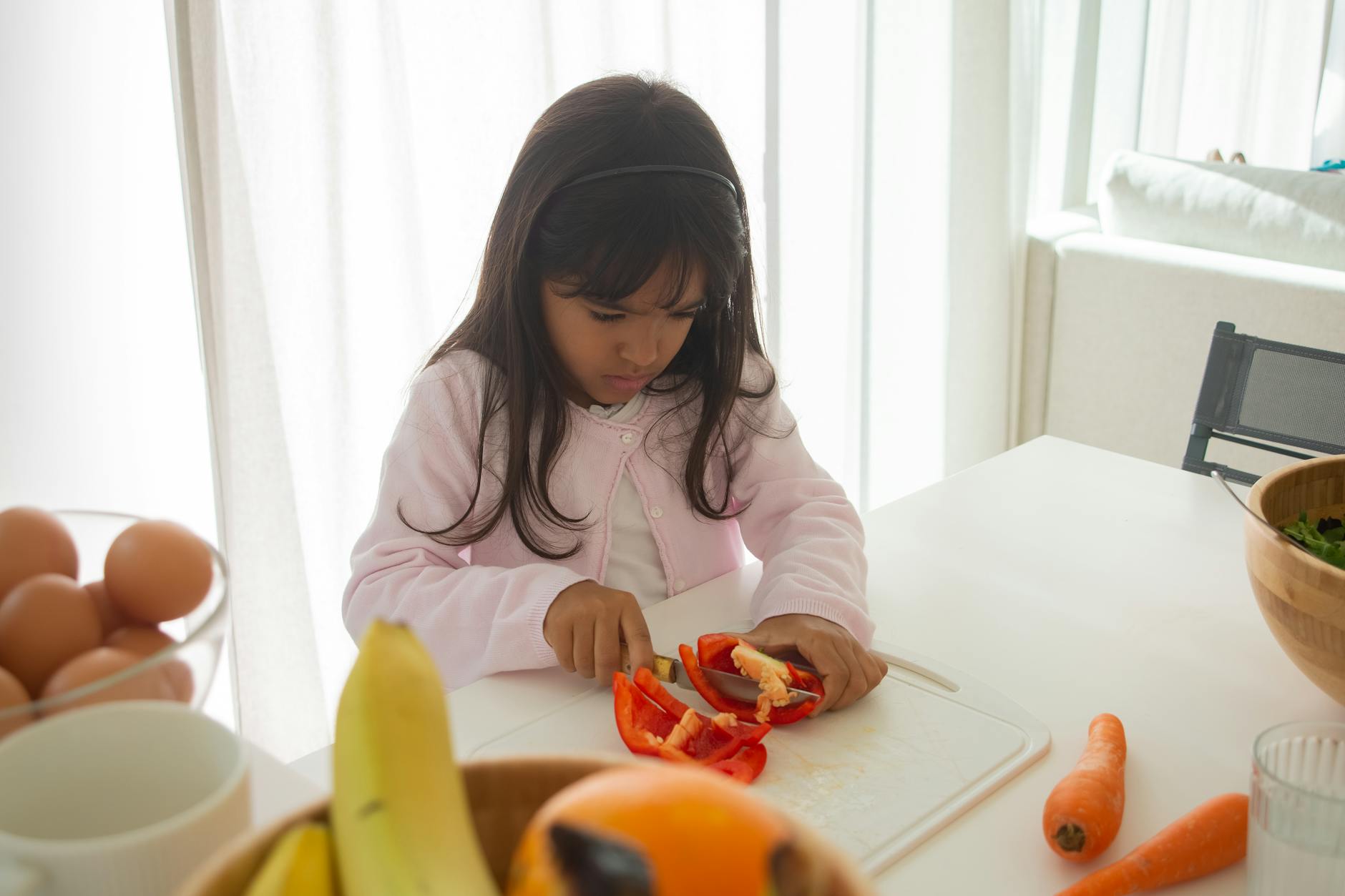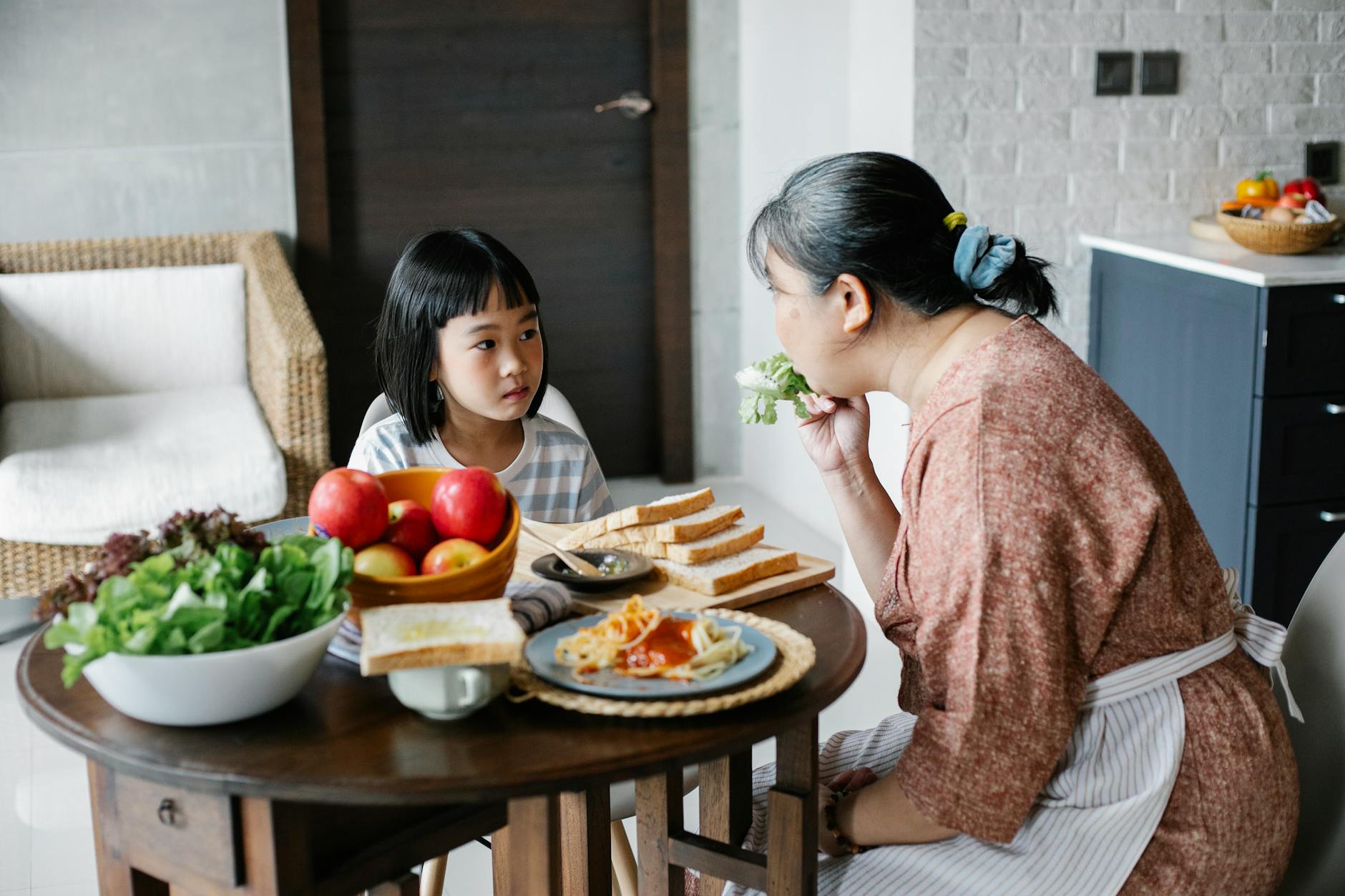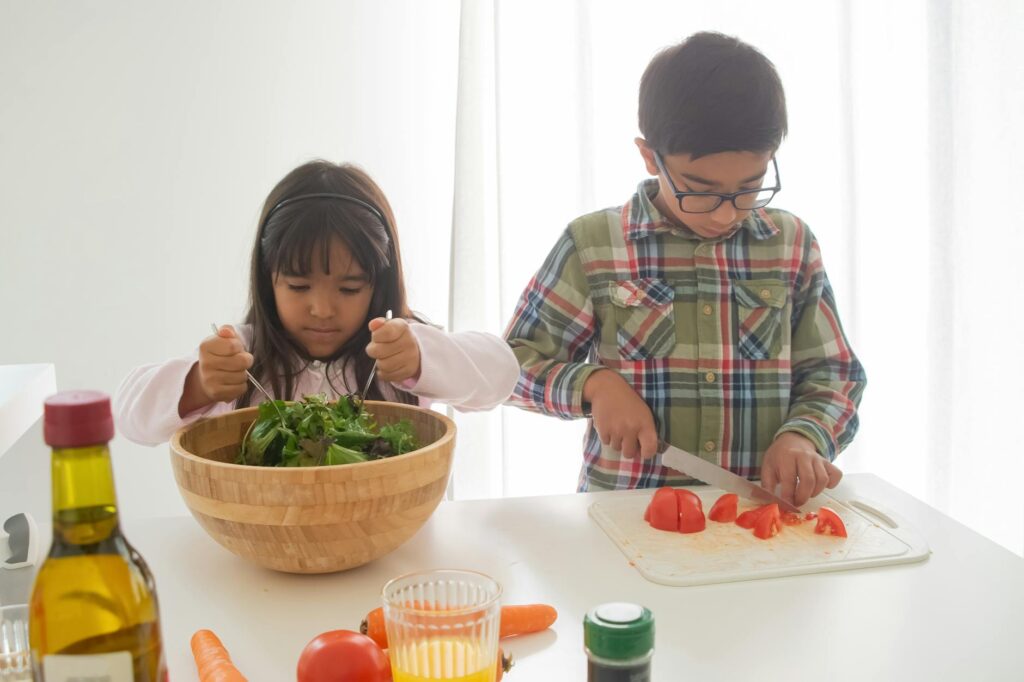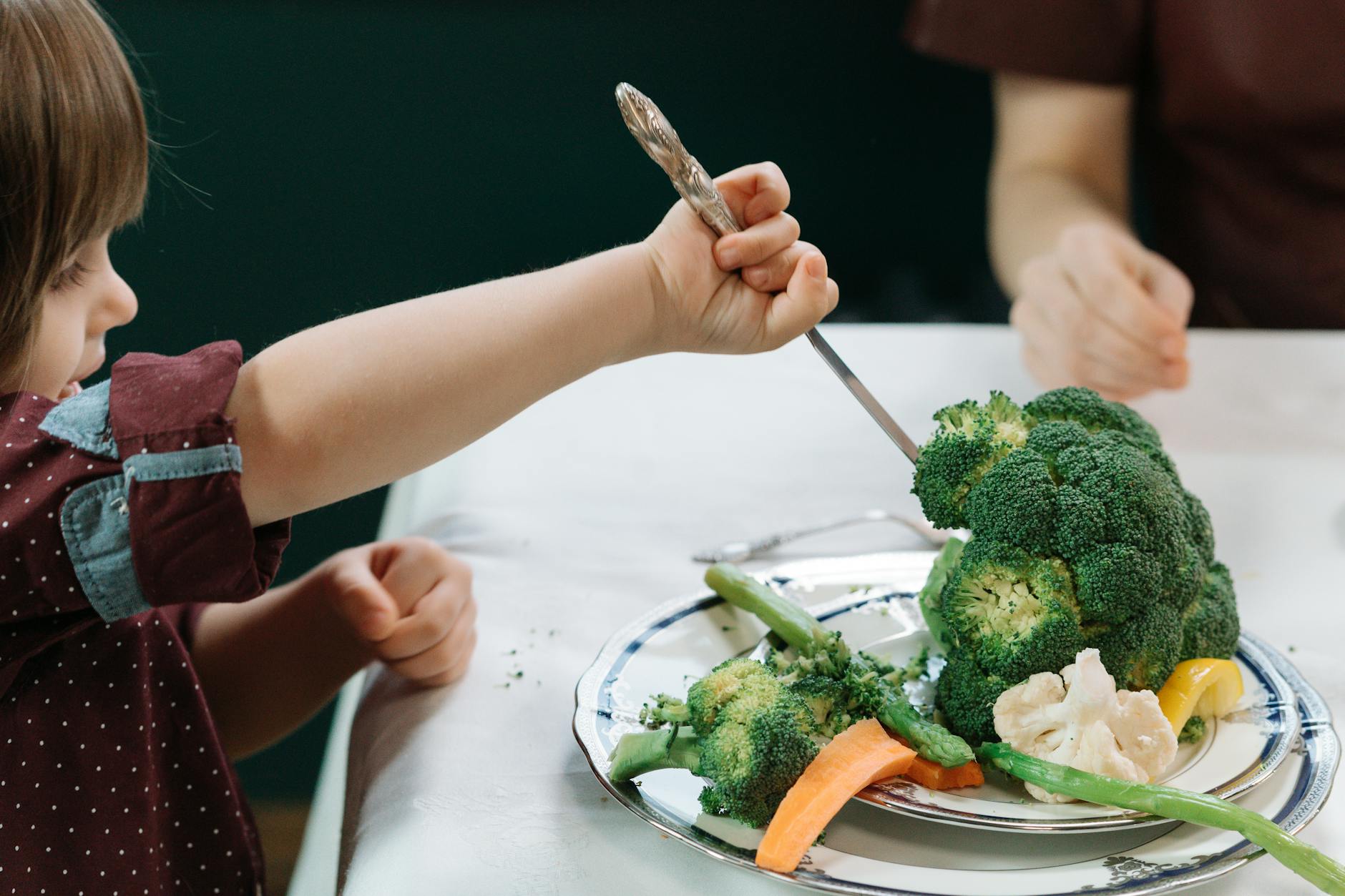March 7th, 2024
Solutions For Picky Eaters: Why Hiding Foods Is a Bad Idea
I know you want a solution that works for your picky eater because let’s face it: parenting picky eaters sucks.
Mealtimes become a battlefield where your kids complain, you nag, bribe, and threaten, and nobody’s having a good time.
And the problems continue away from the table. You worry about their nutrition needs. There’s no way they’re getting enough vitamins and minerals because we all know “man (or kids) cannot live on bread alone”.
So, let’s dive into solutions for picky eaters that actually work.
Most parents start with this picky eating “solution” that makes things worse.
“What if I just hide the veggies in something he likes?” – said every mom of a picky eater at some point.
Out of all the potential solutions for picky eaters, hiding veggies in recipes like smoothies, muffins, and pancakes seems like the winner; you’ll get the nutrients in and avoid the conflicts at mealtimes, right?
In reality, hiding veggies (or whatever else they don’t eat) in other foods can make things far worse, and here’s why:
- You’re not solving the problem. You’ve still got a picky eater who’s not willing to eat veggies – in fact, they’re less willing than ever to eat them because they’re never anywhere near their plate.
- You’re playing a constant game of “don’t get caught” and if your kid ever sees you adding spinach to his muffins, smoothie, or pancake, he’ll be less willing than ever to try new food because he’ll think you’re hiding something “gross” in it.
- It undermines your authority as the parent figure in the household. Children need boundaries. Giving into their demand that they “never eat veggies” sends a message that you’re not in charge. They need to learn that although they can choose not to eat a veggie, they don’t choose the menu at home.
- You’re denying them an incredible learning opportunity. Learning to like new foods is just that – learning! Amazing parents like you don’t give up on their kids when they struggle to learn a new skill. For more on adventurous eating as a learned skill, check out this post.

Exposure To Rejected Foods Puts the Brakes on Picky Eating
When kids reject a food, our job isn’t to prevent them from ever seeing or interacting with it again…it’s the opposite. We need to teach them to tolerate or even enjoy things they don’t like (but need) through repeat exposure.
Still skeptical? Think of it this way:
- If our kids don’t like math, we don’t protect them from seeing a math book or doing math.
- If kids don’t like wearing clothes, we don’t let them run naked in the streets.
- If they hate swim lessons, we don’t just give up and keep them in lifejackets forever.
I’ll say it again: being an adventurous eater is a learned skill. Just like math or swimming, it comes a lot easier to some kids and it’s a real challenge for others.
We need to help them with this skill and it begins with sensory exposure to new/rejected foods.
What Does “Exposure” to Foods Mean?
Exposure to new foods means intentional sensory exposure in a controlled, positive environment.
This doesn’t mean kids have to start with tasting food over and over again. They can simply touch, smell, or see that food and it counts as a sensory exposure. All kids, regardless of age, can be successfully exposed to new foods. Let’s explore some examples of each type of sensory exposure that you can get started with today.

Easy Ways To Provide Visual Exposure:
1. Keep Offering:
This one is as simple as it sounds. Rather than hiding veggies (or chicken, or beans) from your child, continually offer it with meals. Let them know that they don’t need to eat it, but it’s part of the meal. If the food is entirely new, many kids do better when it’s on a separate “taste plate” to the side of their main meal. This provides visual exposure but removes the anxiety of having that food too close to the others.
2. Set an Example:
Make sure your child sees you enjoying the salads, pork chops, or oatmeal that they keep rejecting. Remember, our job is to model ideal behaviour for our littles and if we never eat a veggie, we can’t expect them to eat one either.
3. Cocktail Party Trick
For foods that can be safely left out on a counter or table for a few hours, one of my favourite tricks is what I call “The Cocktail Party” trick featured in this post. Things like nuts, cherry tomatoes, or trail mix can be left in a bowl on a surface that your child regularly walks past. Just seeing that food out makes it more likely they’ll eventually try it out of boredom, hunger, curiosity, or all three!
The key to this trick is to not pressure them to eat it. I’ve managed to get my kids to try super dark chocolate, almost every kind of nut or seed, energy balls, and countless other foods just by leaving it out on our kitchen bar. One of my kids even started eating raw turnips one day when I walked away from dinner prep for a while! I’ve even done it with other people’s “picky” kids when they visit.

Simple Ways to Provide Tactile & Olfactory (Touch & Smell) Exposure:
1. Collection Duty
Ask your child to help gather ingredients for a meal from the fridge. This is an extremely low-pressure way to get them more used to the feel and (sometimes) smell of a food. You can also have them collect things from shelves in the grocery store for the same effect – and kids often like choosing fruits and veggies off the supermarket shelf.
2. Sous Chef Time
Encourage your kids to help out with meal prep. This can be done from age 2! Start with simple tasks that don’t require a ton of time and keep it age and skill-appropriate to make it enjoyable for your kids. Some examples of what kids of different ages can do are below.
Age 2-4
- Put ingredients into a bowl (like veggies you’ve chopped for a salad)
- Scrub fruits and veggies
- Mix simple things like fruit salad
- Play with real fruits and veggies – why bother with wooden ones?
Age 5-8
- Everything from Ages 2-4 above.
- Peel and chop fruits and veggies (avoid harder veggies like sweet potatoes and carrots until they’re more comfortable using a knife).
- Mix ingredients in a bowl or pot (using supervision at the stove)
- Measure out ingredients for a recipe
- Help choose recipes from books/websites
- Depending on dexterity, assembling things like fruit kabobs
- Kids should be doing something to help with school lunches at this age – even if it’s just putting things into compartments of a bento box – this is a crucial skill many kids lack.
Age 9+
- Everything from ages 2-8 above.
- Kids at this age can choose recipes and help immensely with food prep. Most kids this age can make a simple meal themselves if taught. Try having them make a salad, soup (supervised), or basic pasta dish from a recipe they find for themselves. If they only want to choose pizza or mac and cheese, ask them to find a simple recipe with one of their “rejected foods” for the rest of the family to enjoy.
Final Notes
This is a learning process and it’s going to be most successful if we don’t overwhelm kids with too many exposures to too many new foods at once. Commit to exposing them to new foods in a way that fits in easily with your lifestyle. Offering veggies with dinner is simple when veggies are part of the meal, but when it comes to food prep, it’s often easier, and more sustainable, to target one or two days or meals per week as dedicated “sous chef time”. This way, kids don’t get overwhelmed with all their new “work” and you don’t become annoyed constantly finding things for them to help with.
Solutions for Picky Eaters Don’t Need to be Complicated, Time-Consuming, or Unpleasant
Solutions for picky eaters don’t need to involve deception, nagging, threats, or bribes. I’m guessing you find those approaches just as unpleasant as your kid does. Plus, you can stop blending up “special” muffins for them because you’ve got the power to teach them to eat real and unblended broccoli voluntarily.
Yes, it may take some time before they’re eating a plateful of chicken and beans, but everything worth doing takes time. And the first step is a significant step in the right direction.
Try some of these exposure tricks at home and liberate yourself from pressuring them to eat.
Keep in mind that this is a learning process for you as well. So be patient with yourself and your littles, trusting that you’re all capable of getting to happy, connected dinners where everyone eats the same healthy meal, without complaining.
It’s always easier to learn a new skill with a qualified pro in your corner. As a picky eating expert, I develop customized plans that take your lifestyle, preferences, skill level (we’re not all Martha Stewart), and your child’s behaviour issues into account. For more info on how coaching can get you enjoying mealtimes sooner, check out my C.A.P.E.S program by clicking here.

